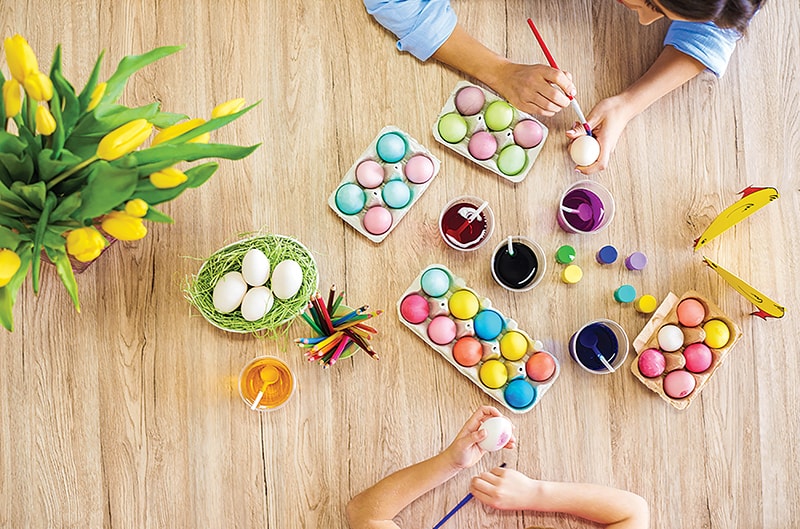
Coloring eggs is a beloved Easter tradition. Eggs long have been symbols of fertility and rebirth, making them fitting icons for spring.
Dyeing eggs is an entertaining activity, but one that also may have some religious significance. Many families will color eggs this Easter, and these guidelines can make the process go smoothly.
- Hard-boil eggs just before coloring. Good Housekeeping recommends boiling eggs for 11 minutes at a hard boil. Do not chill the eggs afterward; warm eggs absorb color more effectively for more vivid results.
- Egg dye can stain various materials, so cover work surfaces with newspapers to soak up any spills and dress in clothing that you’re not worried about staining.
- Make a drying rack to ensure that eggs will dry evenly. This can be a rimmed cookie sheet lined with layers of paper towels to absorb any excess dye that runs off the eggs. Or push pins into thick foam board and place the eggs on top to allow air to circulate.
- Consider using glass bowls or ceramic mugs to house the colored dye solutions. These vessels are more sturdy than plastic cups, and less likely to be overturned by eager young hands.
- Scissor-style tongs are ideal tools for retrieving eggs from the dye. Eggs tend to slide off of the spoons or wire rings provided in kits, leading to splashing and kids dunking their fingers in to grab eggs.
- Stir dyeing cups often to guarantee consistent color.
- Use electrical tape to make patterns on Easter eggs. Dip the eggs and let dry. Afterwards, remove the tape to reveal the designs.
- If food coloring-based dyes seem too messy, use watercolor paint sets and allow everyone to get creative.
While some people may want to use Easter eggs for recipes later on, it may be safer to boil up a fresh batch of eggs for that purpose, even if it seems wasteful. According to Emily Rubin, RD, LDN of the Thomas Jefferson University Division of Gastroenterology and Hepatology, “hard-boiled eggs should be refrigerated within two hours of cooking and discarded if left out for more than two hours at room temperature.” Chances are it may take two hours or more for children to find hard-boiled eggs hidden by the Easter bunny.



